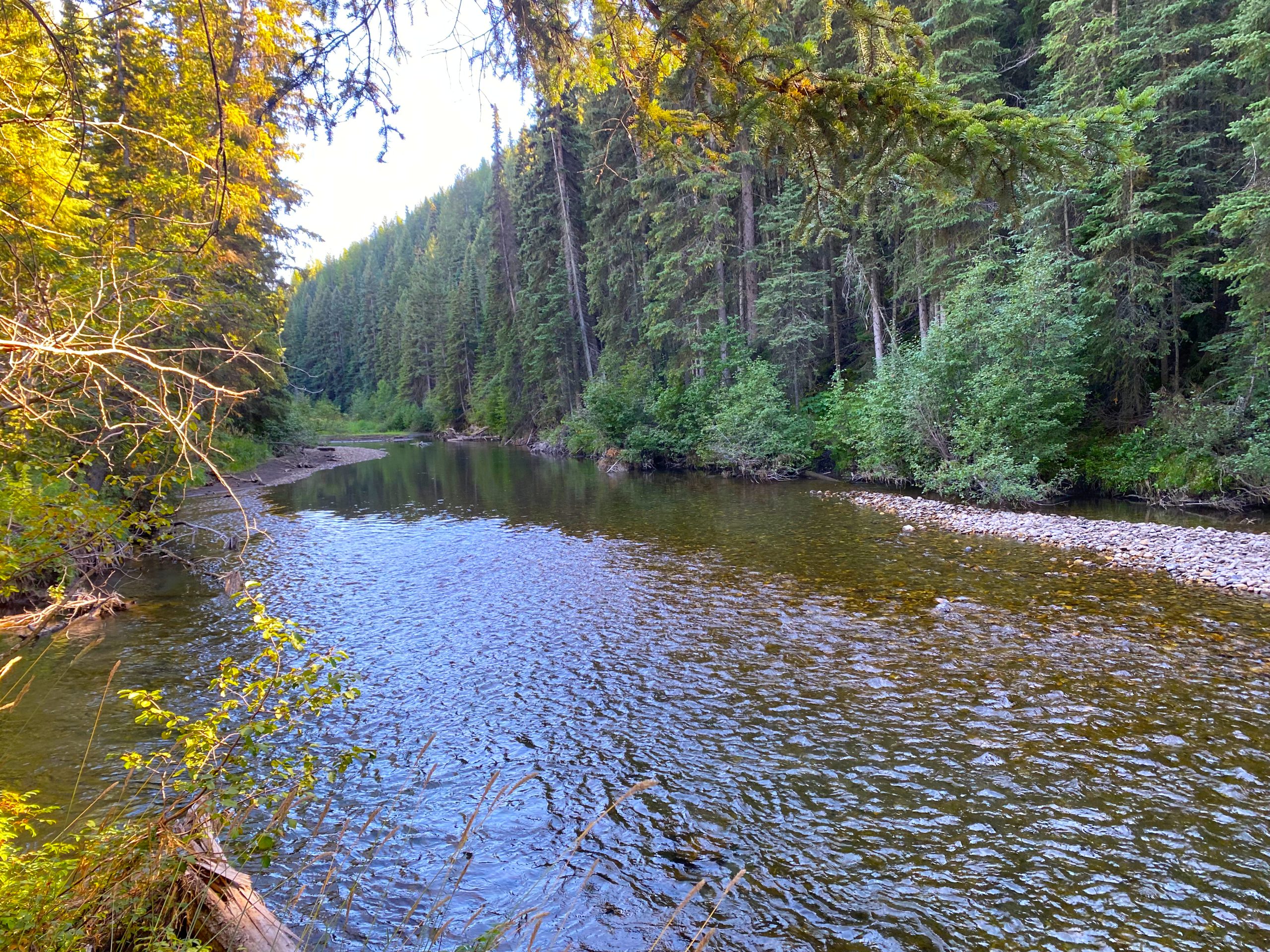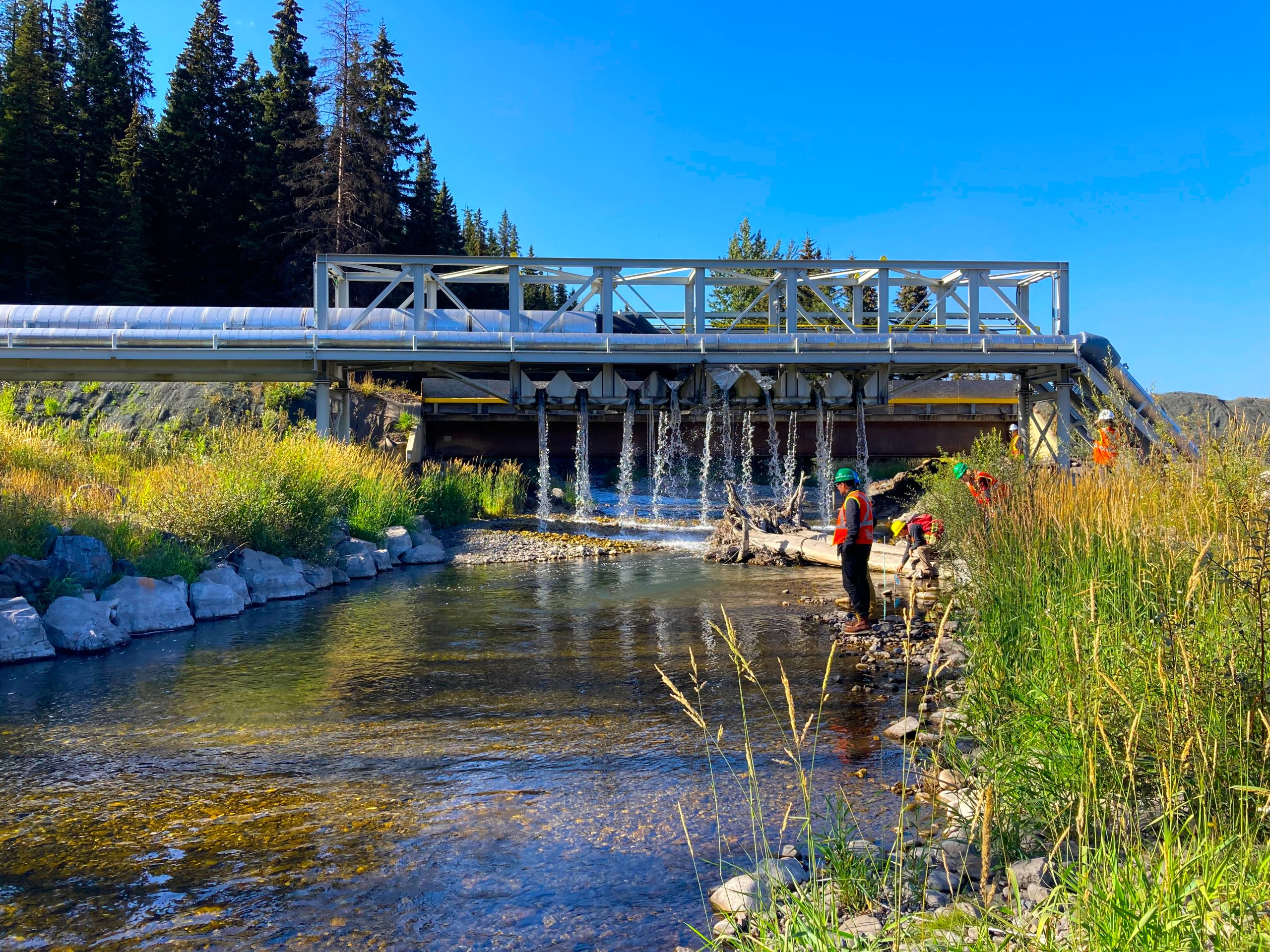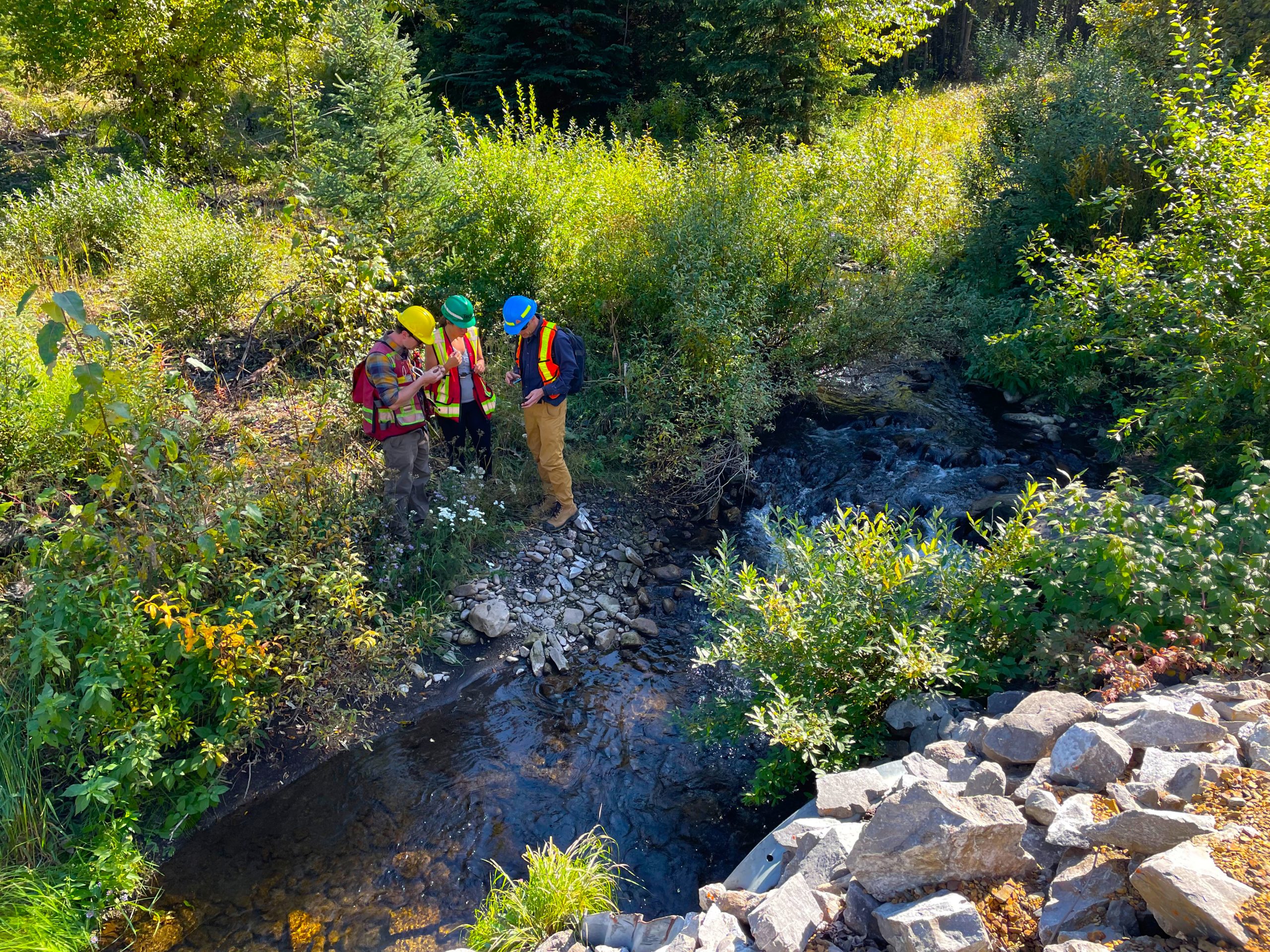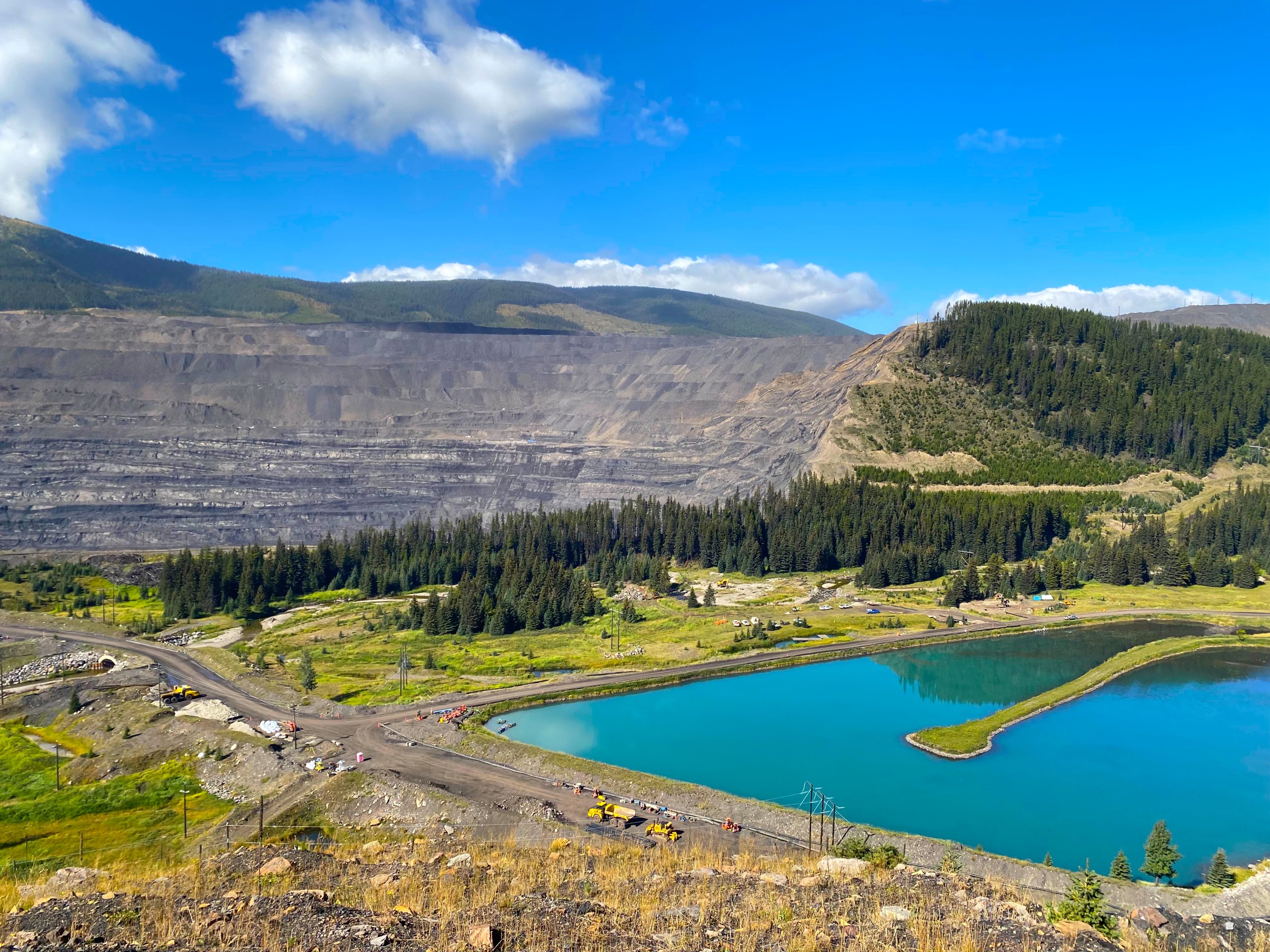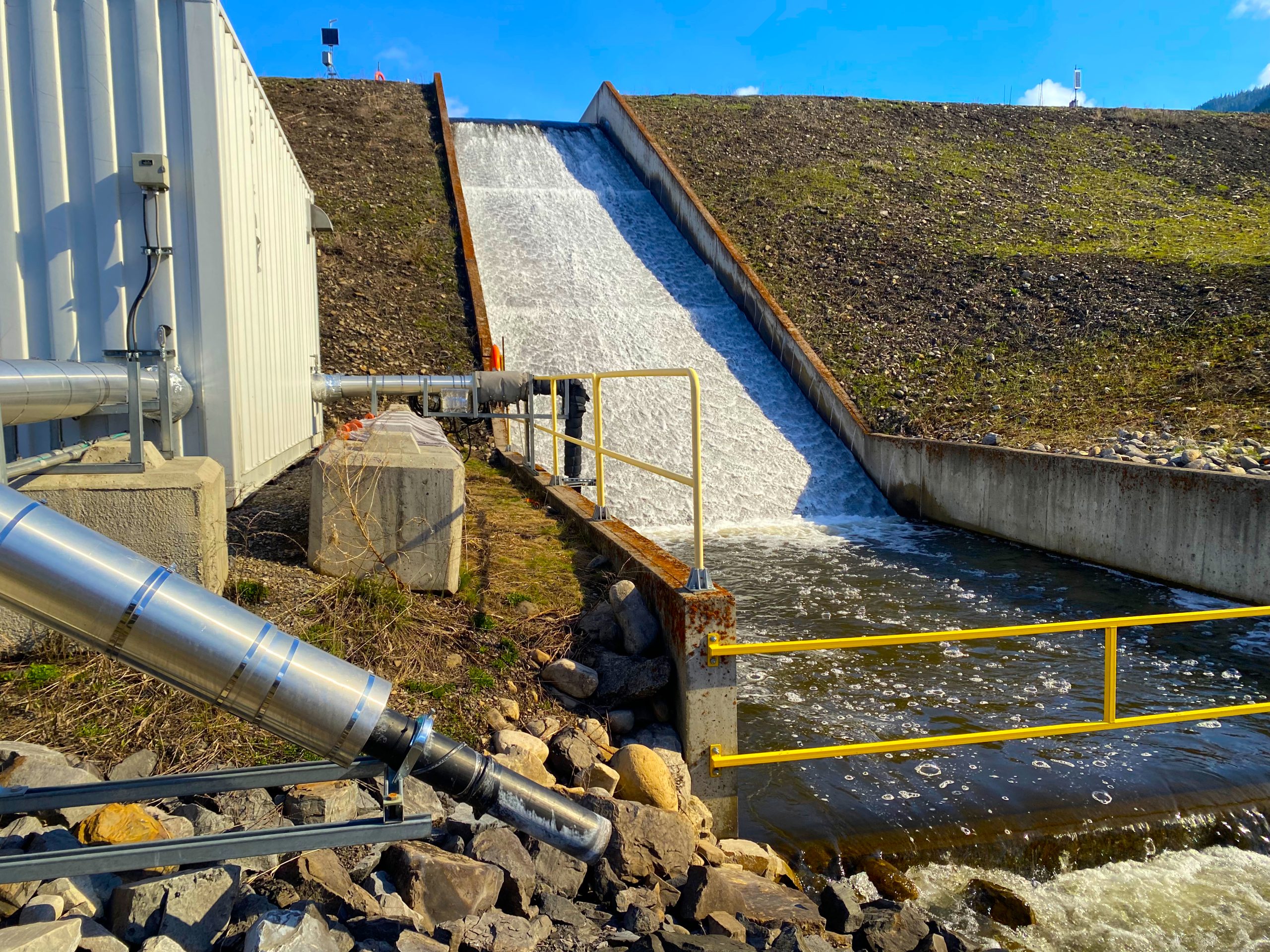Updated November 2023
On this page
Highlights
Water quality
Water quality results collected in 2022 varied seasonally, similar to previous years (see figure below). Monthly selenium levels exceeded the selenium target in February and April, with the highest monthly average yet recorded occurring in April 2022. April 2022 was also the first time since 2018 that the average monthly selenium level exceeded 2 ug/L further downstream near the Canada/U.S. border. This is likely the result of abnormally low flows in the Kootenay River in April, resulting in low dilution of Elk River water. In addition, in response to the large 2022 snowpack, the reservoir was drawn down to very low levels beginning in February, which would have also reduced mixing, especially further south in the reservoir. Further discussion is provided in the Data and Details section.
Selenium results in Koocanusa Reservoir
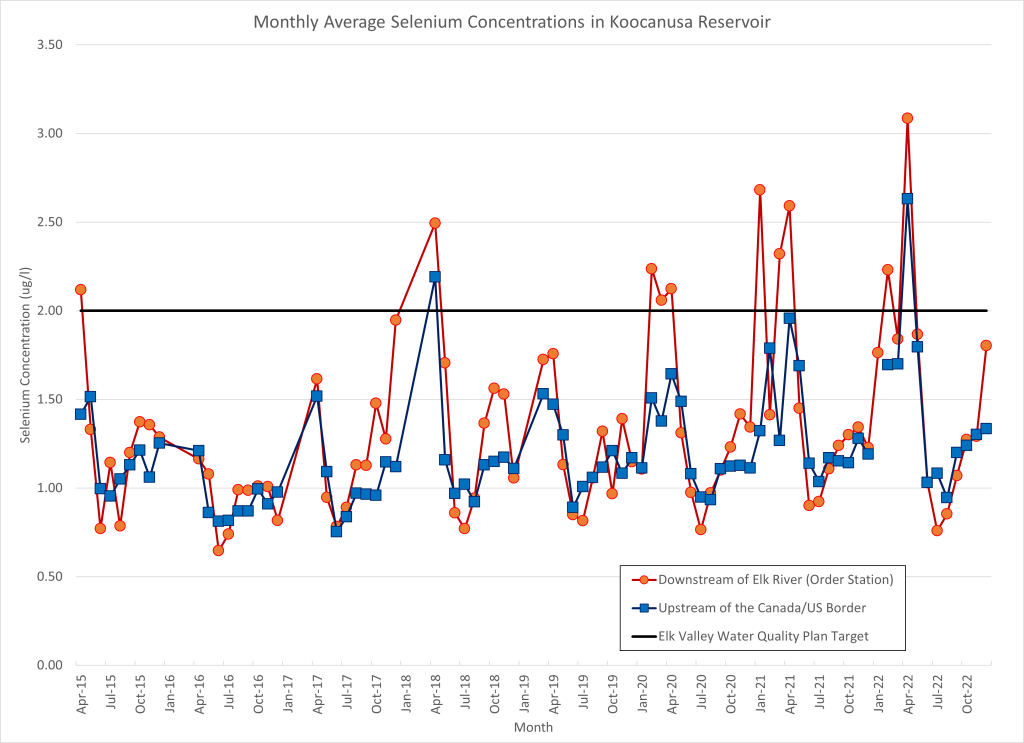
Source: Data downloaded from the Environmental Monitoring System (EMS) Database
This figure shows selenium concentrations at two monitoring locations in Koocanusa Reservoir, South of the Elk River (Order Station) and Upstream of the Canada/U.S. Border. Concentrations have increased and have exceeded the Elk Valley Water Quality Plan target more often at these locations.
Fish
Fish monitoring across a range of species showed tissue selenium concentrations to be higher in Koocanusa Reservoir downstream of the Elk River confluence, compared to upstream. However, average concentrations remained below levels that may cause impacts on fish health.
Data and details
Water quality
The B.C. government requires EVR to monitor water quality at five locations in the Canadian portion of Koocanusa Reservoir:
- Koocanusa Reservoir Downstream of the Elk River (Order Station)
- Koocanusa Reservoir Downstream of Kikkoman Creek
- Koocanusa Reservoir West of Grasmere
- Koocanusa Reservoir Upstream of Gold Creek
- Koocanusa Reservoir Upstream of Canada/US Border
Results collected from the Order Station are important because the station:
- Is located directly downstream from the Elk River
- Has a selenium limit in Permit 107517, aligned with the target in the Elk Valley Water Quality Plan
Water Quality data for selenium, sulphate and nitrate can be viewed on the Water Quality Dashboard for the Order Station and other locations in the Elk River.
All data is available for download from the Environmental Monitoring System (EMS) Database.
Interpreting results
When using or interpreting selenium and other water quality results from Koocanusa Reservoir, systemic factors such as seasonality and reservoir management must be considered.
In Koocanusa Reservoir, water quality varies throughout the year and over time due to several factors, including:
- The amount of the substances in the Elk River
- The flow rate in the Elk and Kootenay rivers
- Water levels and flows within the reservoir, as determined by Libby Dam operations
Late winter and early spring
Selenium in the reservoir is typically highest during this low flow time, consistent with what is measured elsewhere in the Elk Valley.
Late spring
Selenium in the reservoir is typically lower during and after the snowmelt (freshet) when river flows and reservoir levels are high, and substances are more diluted.
All monitoring locations in Koocanusa Reservoir, even those far away from the dam, can be influenced by fluctuations in the reservoir level.
- At certain times of the year, when water levels are low, the reservoir is narrow and flows like a river. Scientists have identified that even at the Order Station, which is approximately 3 km downstream from the Elk River inflow, waters from the Elk and Kootenay rivers are not fully mixed.
- At other times of the year, when the reservoir is full, it resembles a lake and there is different mixing of the Elk and Kootenay rivers.
- When the reservoir is more lake-like more water is available for dilution and substance concentrations are lower.
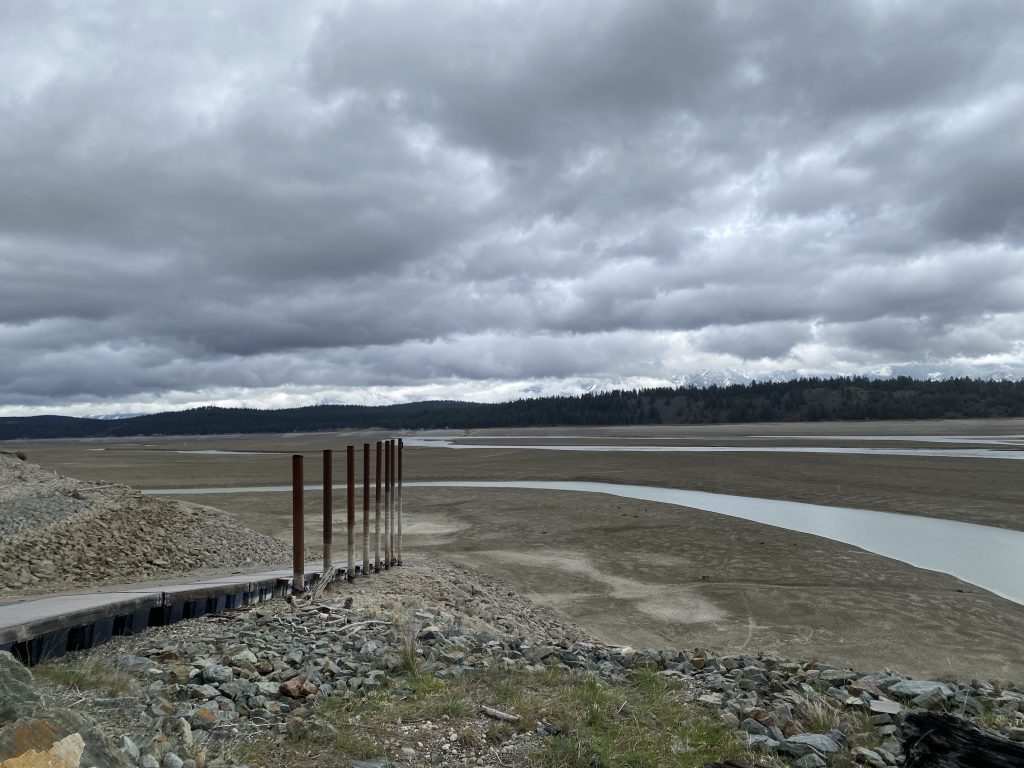
Koocanusa Reservoir when water levels are low.
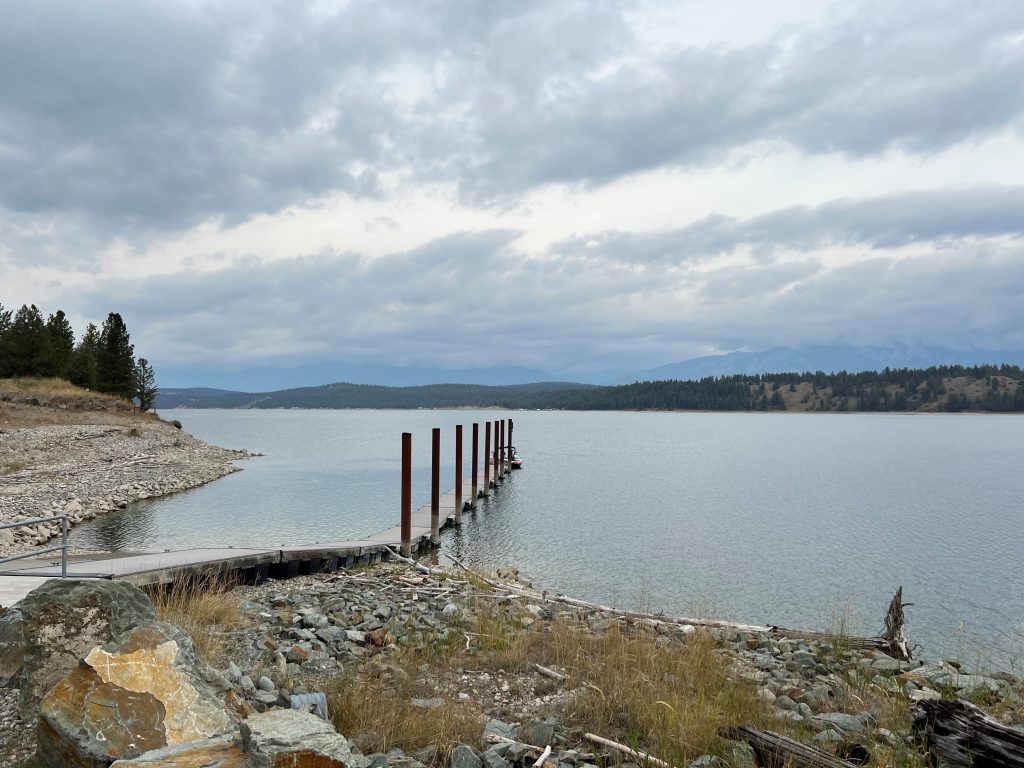
Koocanusa Reservoir when water levels are high.
Water sampling methods in the reservoir now account for these changing conditions and try to address the possibility of incomplete mixing. Water samples are now collected from multiple depths and multiple points across the reservoir (east-west transects) at each location.
The approach of sampling at multiple points across the reservoir in a line (transect) is relatively new and provides a more accurate estimate of the selenium exposure to aquatic life in the reservoir.
Recent data summarized on the Water Quality Dashboard accounts for multiple samples collected along a transect and at depth. Individual sample results from the EMS Database must be properly assessed before comparisons are made or conclusions are reached.
Aquatic ecosystem monitoring
To understand the ecosystem in Koocanusa Reservoir, the B.C. government requires EVR to sample:
- Water quality
- Sediment quality from the bottom of the reservoir
- Zooplankton and aquatic insects tissue selenium concentration and community composition
- Fish health and tissue selenium concentration
Of particular interest is whether selenium measured in the reservoir water affects fish species. Ten species of fish are regularly sampled for selenium in muscle tissue and two species are regularly sampled for selenium in egg/ovary tissue. Muscle tissue can be collected from many different fish species non-lethally, while egg/ovary collection requires lethal sampling.
Egg/ovary tissue provides the most direct predictor of potential reproductive effects in fish. Where possible it is desirable to sample egg/ovary tissue, despite sampling being lethal. In recognition of the importance and value of certain species, such as sport fish or fish populations that are small, lethal sampling programs may be carried out on a surrogate species. Results are then used to estimate risks to other species. In Koocanusa Reservoir, Redside Shiner and Peamouth Chub are regularly sampled for egg/ovary tissue.
Egg/ovary data
In previous years, sampling found that egg/ovary tissue selenium levels are higher in Redside Shiner and Peamouth Chub than other fish species. Work is ongoing to understand how sensitive these species are to selenium, and if reproductive impacts may be occurring. In 2022, selenium concentrations in Peamouth Chub did not exceed BC guidelines or known effects thresholds. Selenium in Redside Shiner ovaries exceeded BC guidelines but were below species-specific effects thresholds. These results indicate that effects to populations of Peamouth Chub and Redside Shiner resulting from selenium concentrations in the reservoir are unlikely.
Detailed research in the Koocanusa Reservoir has improved understanding of the importance of sample timing when assessing egg/ovary selenium concentration. Studies have shown that egg selenium concentrations are highly sensitive to the stage of egg maturity. If sampling occurs during the wrong time in the egg maturation cycle selenium related effects may be under, or over predicted. This learning has been applied to ongoing monitoring and research to ensure data collected in EVR’s required monitoring programs is representative of actual risks.
Muscle data
In 2022, selenium in muscle tissue of all fish species was below BC guidelines, except Redside Shiner. Selenium in muscle tissue of Peamouth Chub and Redside Shiner was significantly higher in fish sampled in Koocanusa Reservoir downstream of the Elk River compared to those sampled upstream. However, the average result did not exceed guidelines that indicate a risk of impacts to these fish species. The sampling results from 2022 were within the range of previous years’ results (2012 – 2022), indicating no trend in muscle tissue selenium over time.
Fish muscle tissue selenium data from Koocanusa Reservoir
Selenium concentrations in fish muscle tissue from Koocanusa Reservoir
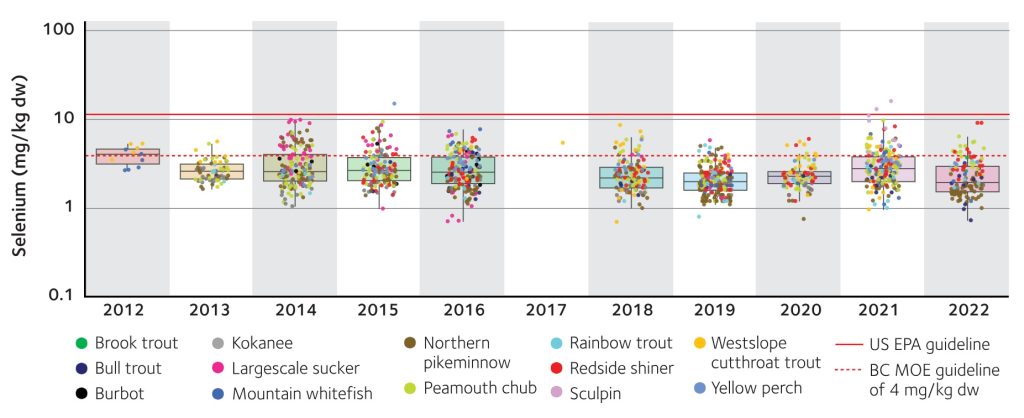
Source: Environmental Monitoring Committee Public Report 2023
This figure shows the concentration of selenium in muscle tissue from all fish species collected in Koocanusa Reservoir over the last 10 years. 2022 results were within the range of previous years. Some individual Redside Shiner and Peamouth Chub samples exceeded the B.C. guideline, but remained below the U.S. criteria.
Learn more in EVR’s 2022 Koocanusa Reservoir Monitoring Report.
Human health
Risks to human health from activities in Koocanusa Reservoir were assessed as part of the Elk Valley Human Health Risk Assessment. More information can be found in the Human Health Annual Update.


